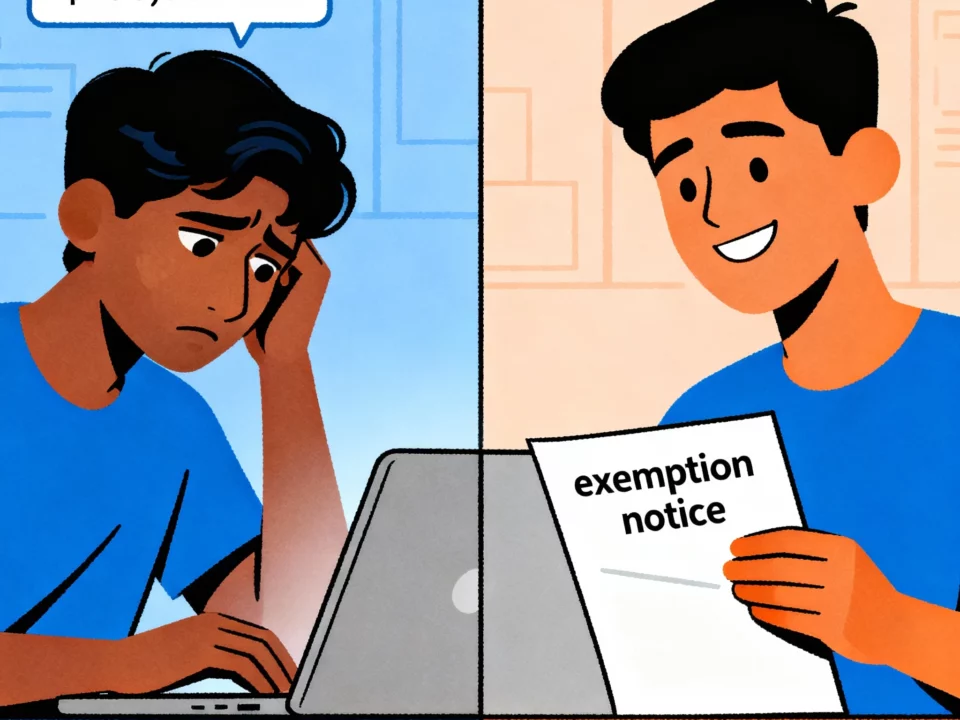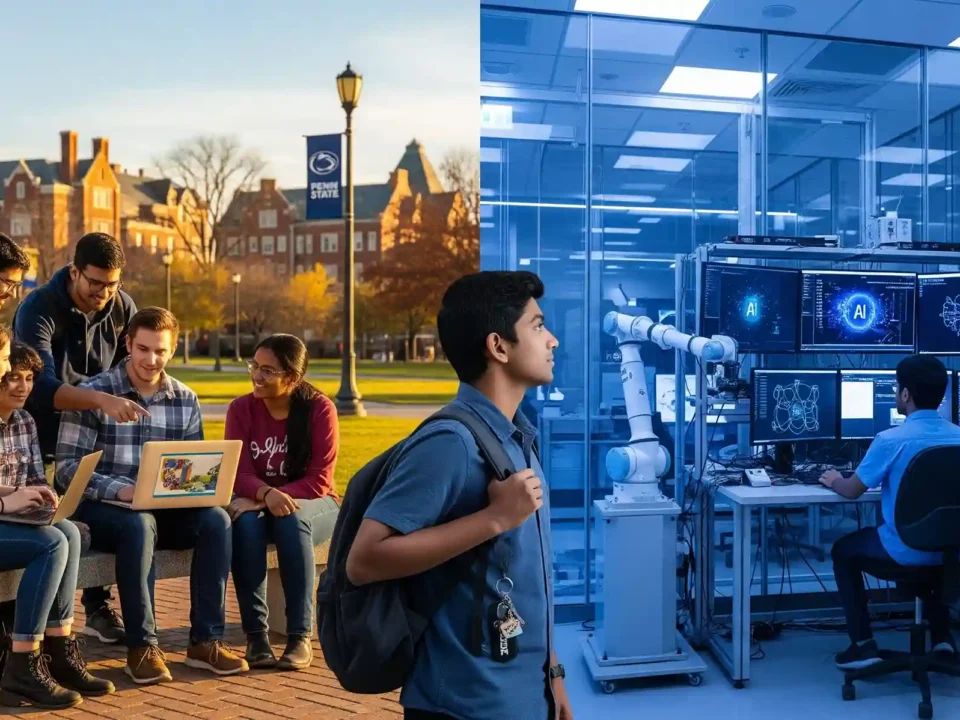An Ultimate Guide on OPT and CPT: Requirements and Eligibility

An Ultimate Guide on OPT and CPT: Requirements and Eligibility
Estimated reading time: 7 minutes
The US job market offers a myriad of opportunities for international students, making it a sought-after destination for those looking to kick-start their careers. Among the pathways available, OPT (Optional Practical Training) and CPT (Curricular Practical Training) stand out as valuable options for gaining practical work experience. However, Indian students often find themselves grappling with understanding the nuances between these two programs. In this comprehensive guide, we aim to demystify OPT and CPT, elucidate their disparities, and outline the prerequisites for each.
Table of contents
What are OPT and CPT?
CPT, short for Curricular Practical Training, caters to students aspiring to acquire practical work experience through internships while pursuing their studies. It furnishes temporary authorization to engage in work-related endeavors. On the other hand, OPT, or Optional Practical Training, is explicitly tailored for F-1 students harboring a desire to work in their chosen field of study. It sanctions students to work for a maximum of 12 months within their designated study area.
| Criteria | CPT | OPT |
|---|---|---|
| Purpose | Gain practical experience pre-graduation | Gain practical experience post-graduation |
| Full Form | Curricular Practical Training | Optional Practical Training |
| Training Time | Before graduation | After graduation |
| Approval body | International Student and Scholar Services (ISSS) | USCIS (US government) |
| Application mode | Online | Paper |
| Duration | Up to 12 months | Up to 12 months, extendable to 24 months (STEM) |
| Application Fees | None | $470 (INR 39K) |
| Working Hours | Both part-time and full-time | Only full-time |
| Employment type | Any employer in the US | Employers listed on I-20 and SEVIS |
Eligibility for CPT
To be eligible for CPT, you must:
- Possess a valid F-1 Visa status.
- Have completed a full year of enrollment as a full-time student.
- Be enrolled in a degree program at an accredited U.S. institution.
- Secure employment that aligns with your university’s requirements.
Documents required for CPT
The documentation necessary for CPT includes:
- CPT workshop completion certificate (online)
- Current F-1 visa and valid passport.
- Complete I-20 form with CPT endorsement from your DSO (Designated School Official).
- Employment offer letter.
- Transcript or enrollment verification from your school.
- Letter of recommendation from your academic advisor.
Features of CPT
It’s essential to be aware of the following aspects regarding CPT:
- Exclusively available for off-campus employment.
- Typically granted in increments of one semester or summer session.
- Limited to 12 months throughout your academic program.
- Mandatory to maintain a full course of study for eligibility.
- Termination of employment or dropping below a full course of study renders CPT authorization void.
Eligibility for OPT
To qualify for OPT, you must:
- Hold a valid F-1 status.
- Be enrolled full-time in a degree program at an accredited U.S. institution for at least one academic year.
- Engage in work pertinent to your field of study, sans the necessity of a job offer.
Documents required for OPT
For an OPT application, the requisite documents encompass:
- Completed I-765 form
- Valid F-1 visa and passport.
- Complete I-20 form with OPT endorsement from your DSO.
- Letter from your DSO advocating for OPT.
- Additional documents may be necessary based on individual circumstances.
Features of OPT
Key facets of OPT include:
- Permits international students to work for up to 12 months in a field relevant to their studies.
- STEM graduates can avail a bonus extension, extending the OPT period to 17 months.
- Approval mandated from USCIS, entailing a processing period of 3-4 months.
- Application window spans three months pre-program completion to one month post-degree requisites.
- Pre-completion OPT duration is subtracted from the total post-completion OPT authorization.
Difference between OPT and CPT
While both OPT and CPT offer avenues for gaining practical experience, they diverge in crucial aspects:
- OPT facilitates post-graduation work, whereas CPT is geared towards pre-graduation experiences.
- Optional Practical Training (OPT) mandates approval from USCIS, while CPT necessitates consent from ISSS.
- OPT permits full-time employment solely, whereas CPT allows for both part-time and full-time engagements.
- Optional Practical Training (OPT) application process incurs a fee of $470 (INR 39K), whereas CPT does not entail any application charges.
OPT Extension
Optional Practical Training (OPT) extension provisions cater to further enriching practical work experience:
OPT STEM Extension: Offers an additional 24 months of work authorization to F-1 students with STEM degrees, extending the total OPT period to 36 months.
OPT Cap-Gap Extension: Bridges the gap between OPT/OPT STEM authorization and the onset of H-1B visa status, facilitating a seamless transition.
Conclusion
OPT and CPT emerge as invaluable avenues for international students to garner practical experience in the US job market. Understanding their requisites, application processes, and limitations is imperative to navigate these programs effectively. Extensions such as OPT STEM Extension and Cap-Gap Extension further augment opportunities for long-term employment in the US. By adhering to the guidelines outlined in this guide, Indian students can harness the full potential of OPT and CPT, paving the way for a successful career trajectory in their desired fields.
Ready to take the next step?
At bluehawks, we understand that navigating the complexities of international education can be overwhelming. That’s why our expert team is here to support you every step of the way.
From personalized consultations to comprehensive test preparation resources, we offer a range of services designed to help you achieve your academic goals. Whether you’re facing challenges with language proficiency or need guidance on selecting the right university, our team is dedicated to providing you with invaluable advice and assistance.
Don’t let language barriers or financial concerns hold you back from pursuing your dreams. Contact bluehawks today and let us help you chart your course to a brighter, more fulfilling future. Together, we can turn your aspirations of studying in the USA into a reality!
OPT (Optional Practical Training) and CPT (Curricular Practical Training) are both programs designed to provide international students in the US with practical work experience. However, they differ in their timing and approval processes. OPT is for post-graduation work experience related to the student’s field of study, while CPT is for pre-graduation internships. OPT requires approval from USCIS, while CPT necessitates consent from the International Student and Scholar Services (ISSS).
Yes, you can work part-time while on both OPT and CPT. CPT allows for both part-time and full-time employment, whereas OPT permits full-time employment. However, it’s crucial to ensure that your work hours comply with the regulations outlined by your program and maintain a full course of study to remain eligible.
Frequently Asked Questions
What is the difference between OPT and CPT?
OPT (Optional Practical Training) and CPT (Curricular Practical Training) are both programs designed to provide international students in the US with practical work experience. However, they differ in their timing and approval processes. OPT is for post-graduation work experience related to the student’s field of study, while CPT is for pre-graduation internships. OPT requires approval from USCIS, while CPT necessitates consent from the International Student and Scholar Services (ISSS).
Can I work part-time while on OPT or CPT?
What documents are required for OPT and CPT applications?
For both OPT and CPT applications, you typically need documents such as a completed application form, a valid F-1 visa and passport, an I-20 form with the appropriate endorsements, and employment-related documents such as an offer letter and transcripts. Specific document requirements may vary, so it’s essential to check with your designated school official (DSO) for guidance.
How long does it take to process OPT and CPT applications?
The processing time for OPT and CPT applications varies. OPT applications typically take 3-4 months for approval from USCIS, while CPT applications may be processed within 5-7 business days by the ISSS. It’s advisable to apply well in advance of your intended start date to account for any potential delays in processing.
Can I extend my OPT period?
Yes, eligible F-1 students with STEM degrees may extend their OPT period by an additional 24 months through the OPT STEM Extension program. This extension allows for a total OPT period of up to 36 months and requires compliance with specific requirements, including participation in a qualifying STEM field and submission of an employer training plan (Form I-983).



